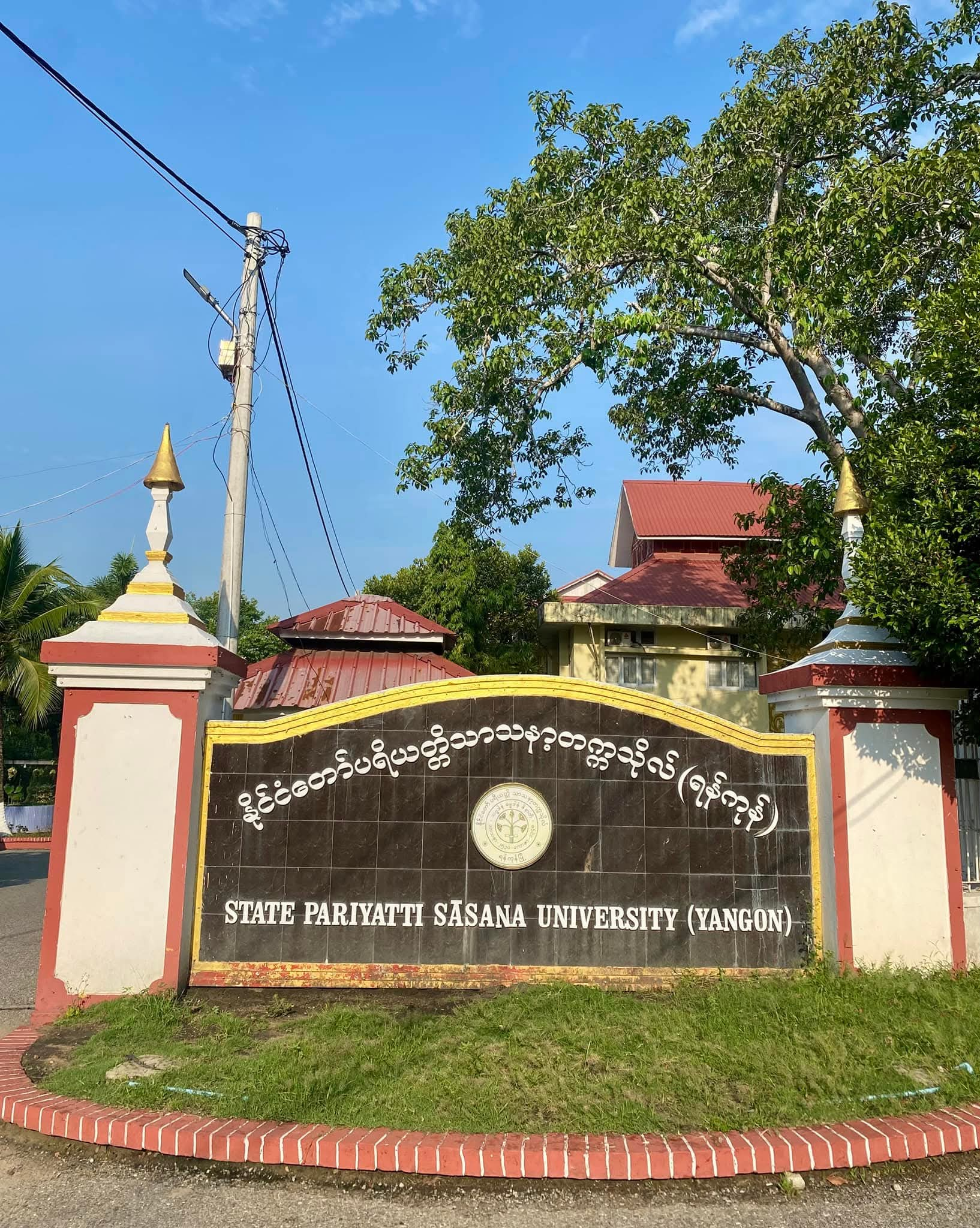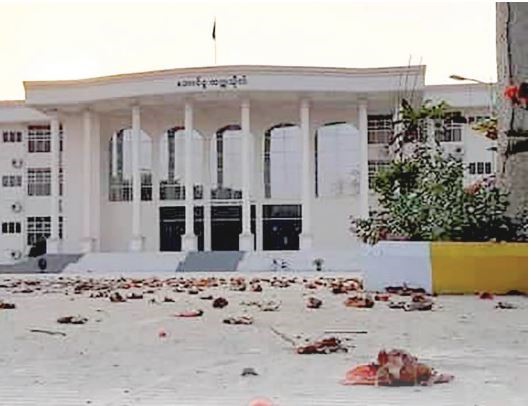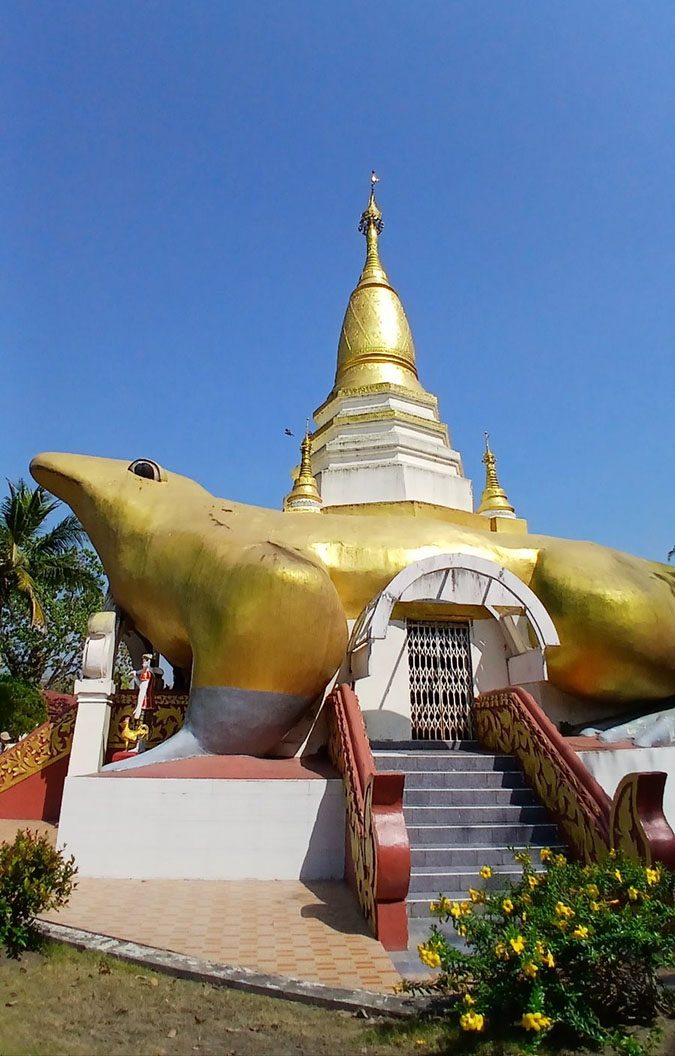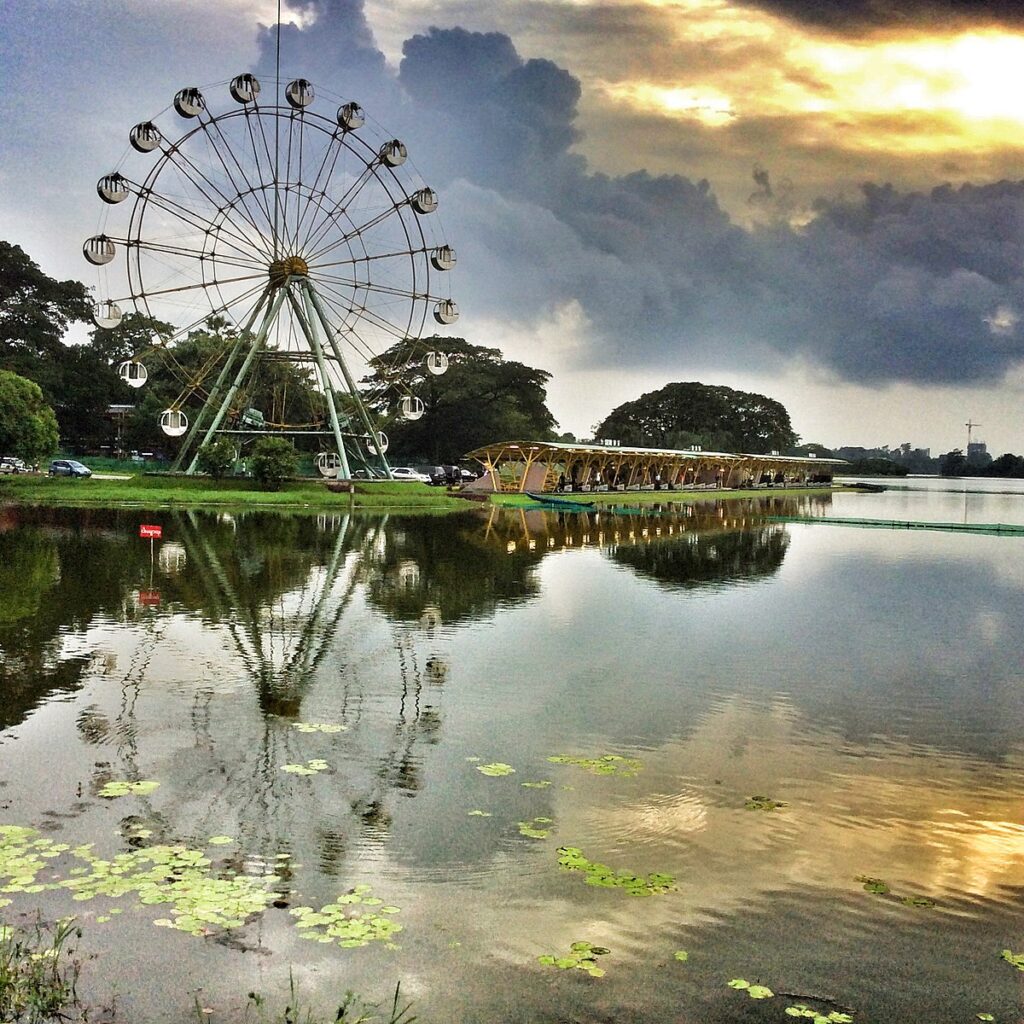A Day Trip to Maubin
Posted_Date
Image
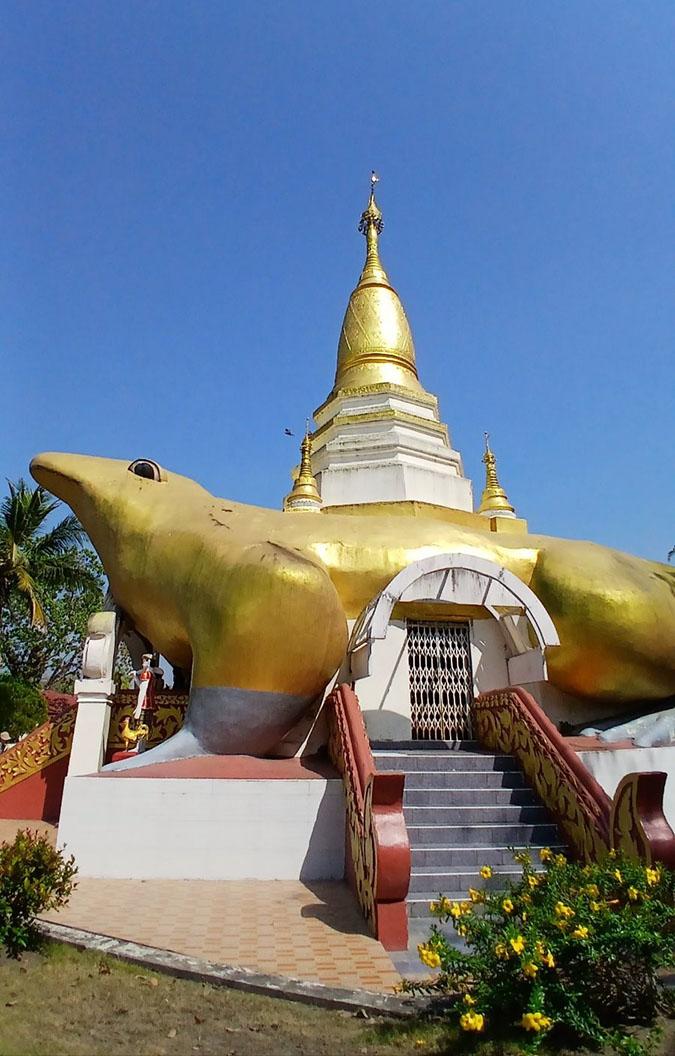
Body
We got five consecutive holidays in the middle of March. So, we, at the invitation of our eldest sister Dr Kyawt Khin, Rector of the Polytechnic University (Maubin), paid for a day trip to Maubin, a thriving town 46 miles from Yangon. That day, we set out there in a mini-bus around 8 am. Our team consisted of my family members, relatives, and friends, totalling 20.
At 8:20 am, our bus reached the Bayintnaung Bridge that spanned the Hlaing River. We saw the glittering surface of the river in the glow of the rising morning sun. A few motor boats, cargo vessels and sampans were inching along the course of the river. When we were crossing Hlinethaya, we found the FMI City, the Nawade Garden City, tea shops, restaurants, industrial zones, four-storeyed apartments and offices on the sides of the road. We also noticed many people swarming around bus stops, waiting for the buses. Some factory employees in their uniforms were getting off the shuttle buses in front of the industrial zones. Some hawkers were selling their food loudly. The scene was in a commotion. At 8:30 am, we arrived at the toll gate on the outskirts of Hlinethaya.
Then, our bus followed the Yangon-Pathein Highway. We espied some resorts, rice mills, lakes, fields and hamlets on the roadsides. We often saw clumps of green trees and rickety huts in the stubble fields. However, in some fields, paddy plants turned yellow. And, a few farmhands were labouring in the fields. As our bus went further and further, the scene became more and more countrified. As we escaped from the distractions of daily city life, we were refreshed and relaxed. As it was a holiday, there was heavy traffic on the road. But some cars were running in a tearing rush, overtaking ours quickly.
At 9:40 am, we got out of the limits of Yangon Region. Soon, we got to Sarmalauk, a prosperous village in Nyaungdon Township, Ayeyawady Region. We got off the bus for the communal pee for about 15 minutes and continued along the highway. With its economic development, Sarmalauk took on the look of a small town with factories, rice mills, mini stores, company offices, brokerage houses, restaurants and tea shops.
When we got beyond Sarmalauk, we diverted from the Yangon-Pathein highway and took the Yangon-Maubin highway. The landscape on the roadsides changed. The road was lined with tall teak trees and shady rain trees. We, on the left side, caught sight of vast alluvial plains stretching many miles eastwards. On the plains were found many paddy fields, fish-breeding pond-cum-fowl-farms, groves of banana plants and betel-nut palms, and corn, eugenia and green-pea plantations.
On the right side, villages stood adjoining. Rice mills, animal feed factories and rice brokerage houses were witnessed at the edge of some villages. Not long before, we passed the Nyaungdon oil field junction. It was a place busy with mini stores, restaurants, petrol stations and other modern amenities and facilities. We proceeded along and soon saw the Mahadhammapala monastery on the right side. At about 11 am, we arrived at the Maubin Bridge which crossed the Toe River, a tributary of the Ayeyawady River. It was over 2,500 feet in length and was built in 1998 during the time of the State Peace and Development Council. A few green vegetable plantations were seen on a big sandbank which emerged near the northern shore.
A few minutes later, we saw the signboard reading ‘Welcome to Maubin’. It is learnt that Maubin obtained its name because it was built on a site where Mau trees (Sarcocephalus Cordatus) grew densely. It was built by the British Government in 1872. But it developed into a big town in a few years due to its thriving economy bolstered by agriculture and fishery. So it was designated as a district-level city in 1902 and put under the charge of a Deputy Commissioner.
When our bus came into Maubin, we, on the left, observed the Maubin Polytechnic University (Faculty of Computing) standing in a wide precinct with a petrol station beside it. When we reached downtown, we found a statue of Bogyoke Aung San erected at a junction of four roads. The traffic of Maubin was much lighter than that of Yangon. We turned right and pursued west. Within ten minutes, we got right in front of the Polytechnic University (Maubin), which was located on the outskirts of the town. There was a grove of shady trees near the university gate. Our team was ushered in by our eldest sister and then led inside the university estate. The main building was a very large, square-shaped, two-storeyed building, at the centre of which was a lotus pond with sprinkling water fountains. The campus was clustered with many buildings such as workshops, laboratories, canteens, student hostels and staff quarters. A big three-storeyed building and a sports stadium were under construction. I noticed that as the university was fully provided with academic facilities and operated well under the close supervision of the thoughtful, experienced rector, it had today become a centre for all the young people who took a great interest in engineering subjects from the neighbouring areas of Maubin. So it was upgraded to the Polytechnic University (Maubin) in November 2024, having combined it with the Maubin Computer University.
At about noon, our group trooped to a food stall near a clock tower next to the bank of the Toe River. As we all were overcome by hunger, we wolfed down on the lunch. The waiters and waitresses had got their hands full, as they had to satisfy the demanding customers like us. However, we saw them very pleased with catering to our group. When we went out after lunch, we espied the shimmering gilded Shwebon Myint Pagoda in some distance. It was the most renowned pagoda in Maubin. It is said that it was 73 cubits in height and that it was built in 1890 with the deposition of bodily relics of an Arahat and small Buddha images yielded from a dilapidated ancient stupa. Although we were at first to visit that pagoda, my eldest sister suggested that we should visit the Uyin-wa Pawdawmu Pagoda, which was better known as Phar Phaya, a half-an-hour drive from Maubin. So we changed our plan and agreed to her suggestion.
On the way to the Phar Phaya, we saw Maubin University ensconced in a large compound sheltered by leafy big trees outside the town. There were wide stubble fields and villages on the sides of the road. We were charmed by the countrified scene. As it was a well-paved tarred one, we reached the arched gateway of the Phar Phaya within half an hour. It was situated in a vast precinct at the confluence of the Toe River, the Pyapon River and the Uyin Creek in Kyaiklat Township. Pagodas and many religious buildings such as monasteries, an ordination hall, shrine rooms, rest houses and pavilions surmounted by a tiered roof were scattered all over the precincts. It is said that a six-inch-high seated Buddha image was discovered about 50 years ago from the place where the Phaya is today situated, that it was a very powerful, wish-fulfilled Buddha image, that it was housed by Baungdaw Gyoke Sayadaw U Nanda in a shrine room to receive public veneration, that in subsequent years, it attracted many pilgrims from the neighbouring areas, that Sayadaw, therefore, constructed the building with a frog-shaped roof and other religious buildings in the precinct and that it was later called the Phar Phaya (Frog-like Stupa) after the building roofed with a big frog statue. When we got off the bus, we saw many pilgrims from different walks of life inside the precinct. Some were paying homage to the Buddha images in the shrine halls and the pagoda. Some were having themselves photographed and selfied. Some were sitting on benches under the shady trees by the banks of the rivers, breathing in fresh air. We espied some boats and sampans fully loaded with local products moving slowly along the rivers. We offered flowers, paid homage to the Buddha images and took documentary photographs. We had a relaxing moment due to the peace and happiness offered by the pagoda precinct and the nearby riverine scene.
At about 3 pm, we started our return so that we could arrive back home before dark. Half on the way back, all the people on the bus, oppressed by tiredness and the heat of the scorching sun, dozed off. All of a sudden, our sleepy eyes were wide open due to a magnified sound emanating from the front part of the bus. Alas! The ones sitting beside the driver whom we addressed intimately as Saya Thet, Saya Tun, Saya Kyaw, Saya Saw and Dr Win were singing Karaoke. The songs sung by them were those of Sai Htee Seng, Hlwan Moe, Khin Maung Toe, Soe Lwin Lwin and Min Aung who were in vogue during their younger days. While singing, they jeered at one another, comparing the theme of the songs with the memories of their past unsuccessful romantic affairs. Saya Thet and Saya Tun who had more memories of romantic affairs were the objects of ridicule. All in the bus became animated with the jokes cracked by them. Thus time passed unnoticed. At 5:30 pm, we stopped briefly at the Mann Myo Taw tea shop and had tea, coffee and dumplings. We arrived back home safe and sound at about 7 pm.
In conclusion, although we were tired from the trip, we were compensated by the beautiful scenery on the way. So we felt relaxed and refreshed. Moreover, the trip also gave us some knowledge of the socioeconomy, education, religion and environment of Maubin Township. So it is thought that this trip was beneficial and rewarding for us.

